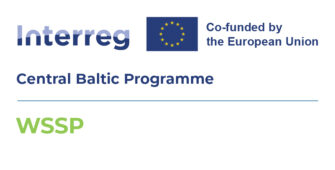WaterShed Safety Plan for controlling diffuse pollution
Solution for water management in the central Baltic Sea region
About half of the pollution that enters the Baltic Sea is diffuse pollution, the source of which is difficult to trace. Diffuse pollution comes from urban areas, agriculture, and forestry, among others. With the help of a new Watershed Safety Plan (WSSP) operational model, municipalities and water utilities responsible for stormwater management can address the diffuse pollution in a cost-effective way and maximise the benefit of water protection activities.
The WSSP model reveals the areas in which the risk of diffuse pollution is most significant. In addition to the risk area, the model addresses different actors of that area, such as decision makers, entrepreneurs, and citizens. Map-based spatial data methodologies are utilized in the process to form a comprehensive snapshot of the load risks. With the help of spatial data, factors contributing to diffuse pollution, such as the amount of vegetation, soil type, elevation, and effects from human activity, can be studied.
The WSSP operational model has been launched and piloted in Finland, but this is the first time when such an applicable watershed-based water management model is adapted at this scale for municipalities and water utilities and similar actors in the Central Baltic area.
Three phases in the project
During the project, the WSSP operational model is tested in six pilot areas which are located in Kirkkonummi and Kanta-Häme in Finland, Utö island and Norrköping in Sweden, Valga in Estonia, and Liepaja in Latvia.
The work proceeds in three phases:
- Piloting the risk assessment stage of the WSSP operational model: Creating diffuse pollution risk maps for the pilot areas
- Piloting the field stage of the WSSP operational model: Designing, implementing, and testing water protection measures in the pilot areas
- Creating a guide for the WSSP operational model and recommendations for future development
Working together with target groups
To ensure that the WSSP operational model will serve its end users in the best possible way, the project invites target groups to co-develop the model. Main target groups are municipalities and water utilities responsible for stormwater management. Their valuable expertise will be utilized through workshops, among others, where they can give feedback and development ideas regarding the model.
If your organization is interested in participating in the project as a target group, please contact us to find out more: Josefiina Ruponen, WSSP Project Manager, josefiina.ruponen@hamk.fi
WSSP Newsletter
Stay up to date on news, results, and events by subscribing to the project’s newsletter. Subscribe to WSSP Newsletter



Find WSSP on social media